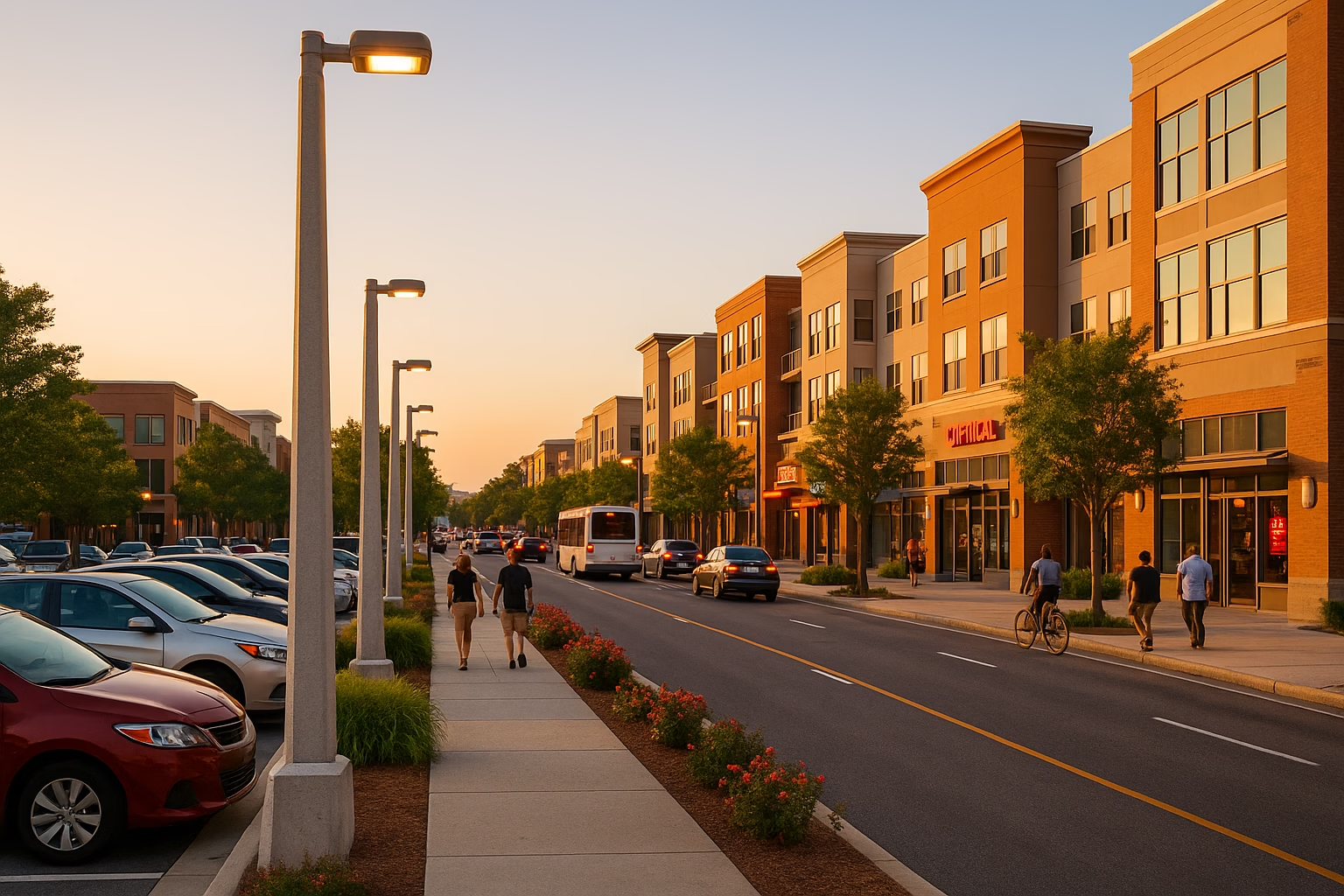Reading Time: 4 Minutes
Low-maintenance street lighting is catching on as more municipalities and developers look for cost-effective, efficient ways to light up public spaces. By picking solutions that don’t need much upkeep, communities can enjoy reliable lighting that cuts costs and lessens environmental impact over time.
Understanding Low-Maintenance Street Lighting
Low-maintenance street lighting usually involves fixtures built to handle environmental stress with minimal repairs or replacements. These systems often use tough materials like concrete, known for its durability, and advanced tech like LED lighting. Compared to traditional street lamps, which often need new bulbs and repairs, low-maintenance options are more sustainable and economical.
Traditional street lights often use high-pressure sodium or metal halide lamps, which use more energy and don’t last as long. On the other hand, low-maintenance street lighting systems use energy-efficient LEDs and strong materials to extend the life of the fixtures while cutting down on maintenance needs. For more on the durability of concrete poles, see our article on concrete light poles vs. other materials.
Cost Comparison: Low-Maintenance vs. Traditional Lighting
When comparing the costs of low-maintenance street lighting to traditional options, consider both the initial investment and long-term expenses. The upfront cost of installing low-maintenance lighting might be higher because of the advanced materials and technology, but the savings on maintenance and energy use can be significant.
- Initial Investment Costs:
-
- Low-maintenance lighting: Higher due to durable materials and advanced tech.
- Traditional lighting: Lower initial costs but needs frequent maintenance.
-
- Long-Term Maintenance Expenses:
-
- Low-maintenance lighting: Less frequent and cheaper to maintain.
- Traditional lighting: Regular bulb and fixture replacements add up.
-
Energy use is another key factor. Low-maintenance lighting systems, especially those with LEDs, use much less energy, leading to big savings over time. This drop in energy use not only cuts operational costs but also supports environmental sustainability. For a comprehensive guide on sustainable concrete technologies, check out Green Concrete Technologies.
Benefits of Low-Maintenance Street Lighting
The perks of low-maintenance street lighting go beyond just saving money. Reduced labor costs for maintenance are a big plus since fewer resources are needed to keep the lights running. This allows municipalities to use their budgets more effectively.
The increased durability and lifespan of these lighting fixtures also improve safety and visibility in communities. With steady and reliable lighting, streets and public spaces become safer for pedestrians and drivers alike.
Low-maintenance street lighting ensures that communities have access to reliable, energy-efficient lighting without the burden of frequent maintenance.
Applications of Low-Maintenance Street Lighting
Low-maintenance street lighting works well in a range of places, from busy urban areas to quiet rural communities. Its flexibility makes it a great choice for municipalities wanting to update their infrastructure while keeping long-term costs down. Discover more about the integration of smart technologies with concrete poles in our article on sensor-enabled commercial lighting poles.
Case studies of successful installations show how effective these systems can be. Cities that have adopted low-maintenance lighting often report lower operational costs and happier residents. Plus, these lighting systems can easily be integrated with smart city technologies, boosting their functionality and efficiency. Consider the benefits of smart streetlights for urban data collection and city management.
Measuring the ROI of Low-Maintenance Street Lighting
To gauge the return on investment (ROI) of low-maintenance street lighting, municipalities should look at several key performance indicators:
- Energy Savings: Reduction in energy use compared to traditional lighting.
- Maintenance Costs: Decrease in spending on repairs and replacements.
- Durability: Longevity of fixtures and less need for interventions.
The long-term financial benefits are obvious, as municipalities save on both energy and maintenance costs. Moreover, the environmental impact of reduced energy use supports sustainability goals, making low-maintenance street lighting a smart choice for modern cities.
Low-maintenance street lighting offers a compelling mix of durability, efficiency, and cost savings that benefits both communities and the environment. That’s why more cities are turning to low-maintenance lighting; Not just for the savings, but for the long-term reliability and peace of mind it brings to their communities.

